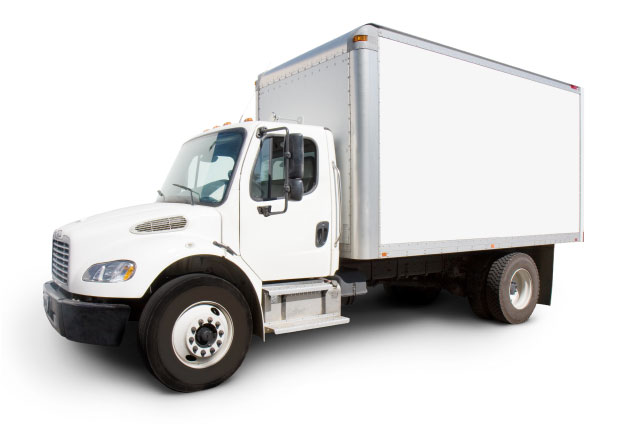Different Approaches for Storing Non-Active Freezers
Posted on 11/06/2025
Different Approaches for Storing Non-Active Freezers: Comprehensive Strategies & Expert Tips
Do you have a freezer that isn't in use? Perhaps you bought a newer model, are remodeling your kitchen, or you need to store a unit for seasonal demand. Properly storing non-active freezers is essential for preserving their longevity, safety, and efficiency. In this article, we'll explore a variety of methods and best practices for storing unplugged freezers, catering to homeowners, businesses, and property managers alike.
Why Correctly Storing Unused Freezers Matters
- Prevents Damage: Improper storage can lead to rust, mold growth, and electrical damage.
- Ensures Longevity: A well-stored freezer can be easily brought back into service, saving money in the long run.
- Safety Concerns: Unplugged freezers improperly stored can pose serious health and safety hazards, especially for children and pets.
- Maintains Efficiency: Storing a freezer correctly reduces the likelihood of energy inefficiency and technical faults once reactivated.

Preparing the Freezer for Storage
Preparation is a crucial first step in storing a freezer that is out of use. Failing to prepare thoroughly can result in costly repairs, mold infestations, or permanent odors. Follow these preparation steps whether you plan to store your freezer short-term or for the foreseeable future:
1. Emptying and Defrosting
- Remove all contents: Ensure there is no food or debris left inside.
- Unplug the unit and allow the freezer to reach room temperature. This process may take several hours.
- Defrost completely: Use towels to soak up any meltwater, and be vigilant in cleaning all moisture to prevent mold.
2. Deep Cleaning the Interior and Exterior
- Use a mixture of baking soda (1 tablespoon per quart of water) to fully clean all surfaces.
- Pay special attention to rubber gaskets, shelves, and bins.
- Wipe dry and allow the freezer to air out for several hours.
3. Secure and Seal Moving Parts
- Remove loose trays or drawers to prevent shifting during transport or storage.
- Secure or tape the freezer door shut loosely--avoid complete air-tight sealing to prevent odor and mold.
Short-Term Storage Techniques for Non-Operational Freezers
Short-term storage is generally defined as a period of less than six months. During this time, your focus should be on accessibility and regular maintenance checks.
Best Locations for Temporary Storage
- Garages or Basements: These areas offer space and typically stay cooler.
- Utility rooms or shed: Ensure the space is dry, well-ventilated, and safe from temperature extremes.
Minimal Maintenance Tips for Short-Term Freezer Storage
- Open the door slightly to promote air circulation and prevent stale odors.
- Use a child/pet safety lock on the door if accessible.
- Check the freezer every couple of weeks for moisture, pests, or unwanted smells.
Long-Term Storage Approaches for Unplugged Freezers
If you're planning to store your non-active freezer for several months or years, more robust measures are necessary. These approaches help prevent structural deterioration, mechanical failure, and unpleasant surprises down the road.
Ideal Environments for Long-Term Storage
- Climate-Controlled Storage Units: Best for areas with drastic temperature swings or humidity.
- Indoor Storage Rooms: Basements, spare rooms, or commercial warehouses with stable conditions.
- Outdoor Sheds (with Caution): Only suitable if properly ventilated and moisture-protected.
Advanced Steps for Effective Long-Term Freezer Storage
- Elevate the freezer off the ground using pallets or blocks. This prevents water damage from leaks or floods.
- Cover your freezer with a breathable sheet or specialized appliance cover.
- Insert moisture absorbers or desiccant packs inside the freezer.
- Leave the door slightly ajar, using towels or spacers for safe, consistent airflow.
Special Precautions to Prevent Mold and Odors
Anti-microbial wipes, baking soda boxes, or charcoal bags can be placed inside to counteract any potential smell or microbial growth. Be cautious not to block air passage completely as this can encourage anaerobic bacteria.
Alternative Storage Solutions: Offsite & Shared Spaces
Sometimes keeping a non-functional freezer at home isn't an option. Alternative storage options can come in handy, offering flexibility and peace of mind.
Renting a Storage Locker
- Climate-controlled units: Great for preserving the condition of your appliance.
- Compare insurance options offered by the facility to protect against theft or natural disasters.
Borrowing Space from Friends or Family
- Confirm they have adequate space and the environment is dry and dust-free.
- Offer to maintain the freezer during its stay, and label the unit clearly with your contact information.
Community or Business Storage Solutions
- Some shared commercial warehouses allow occasional storage of household appliances at affordable rates.
- Research and verify access, liability, and storage conditions before making arrangements.
Protecting and Securing Your Idle Freezer
Guarding Against Pests and Intruders
- Inspect storage areas for rodent or insect activity before placing your freezer.
- Seal potential entry points and place traps or repellents around the general storage location.
Preventing Accidents and Injuries
- Secure upright position: Always store upright to prevent compressor oil leakage.
- Place clear signage or a lock on the freezer door to discourage entry, especially by children.
- Keep the area around your freezer clutter-free to reduce trip hazards.
Transit and Positioning: Moving Freezers Before Storage
Safe Transport Guidelines
- Keep the freezer in its upright position at all times to prevent coolant or oil migration inside the appliance.
- Use moving straps and adequate padding to avoid damage during transit.
- Allow the unit to stand upright for at least 24 hours after transport (before plugging back in).
Frequently Asked Questions on Non-Active Freezer Storage
Can you store a freezer outside?
It's not advisable to store a freezer outdoors unless in a well-protected, dry, and ventilated environment. Temperature extremes can damage the unit's interior and exterior.
How do you prevent mold in a long-term stored freezer?
Proper cleaning, drying, and keeping the door slightly open are the most effective methods for mold prevention. Adding baking soda, anti-mold sachets, or charcoal can further help.
Should you place anything inside an unplugged freezer during storage?
Yes, it's recommended to place moisture absorbers or a container of baking soda inside to neutralize odors and absorb humidity.
How often should you check a stored freezer?
Ideally, perform a quick inspection every month or two--especially if stored long-term or in less-controlled spaces.
Environmental Considerations: Green Ways to Store or Retire Freezers
- Energy Star Recycling Programs: If retiring an old freezer, check for local recycling options that follow environmental standards.
- Donate to Charities: If your freezer still works, consider donating to organizations or families in need.
- Responsible Disposal: Never dump or abandon old freezers due to the CFCs and refrigerants they might contain.

Conclusion: The Best Approach for Storing Non-Active Freezers
Properly storing freezers that are not currently in use is about more than just moving them out of the way. From smart preparation and cleaning to choosing suitable storage environments and ongoing checks, each step helps safeguard your appliance and your property. Whether you need short-term freezer storage in a garage or more elaborate long-term approaches through a dedicated storage facility, informed care and regular maintenance make a significant difference.
By following these strategies for storing non-active freezers, you'll enjoy longer appliance life, better energy efficiency, and complete peace of mind--ready for reuse at any time. Treat your idle freezer right, and it will serve you well when needed!
Quick Checklist: Key Tips for Storing Freezers When Not In Use
- Defrost and clean thoroughly--remove all moisture.
- Store upright and elevated when possible.
- Keep plugged out and door slightly ajar with a spacer.
- Use moisture absorbers or baking soda inside.
- Periodic checks for signs of mold, pests, or damage.
- Choose a dry, cool, and well-ventilated storage spot.
- Secure or lock the door for safety, especially around children.
For more appliance tips, follow our guides on safe storage and maintenance--including actionable strategies for any household or business setting.





